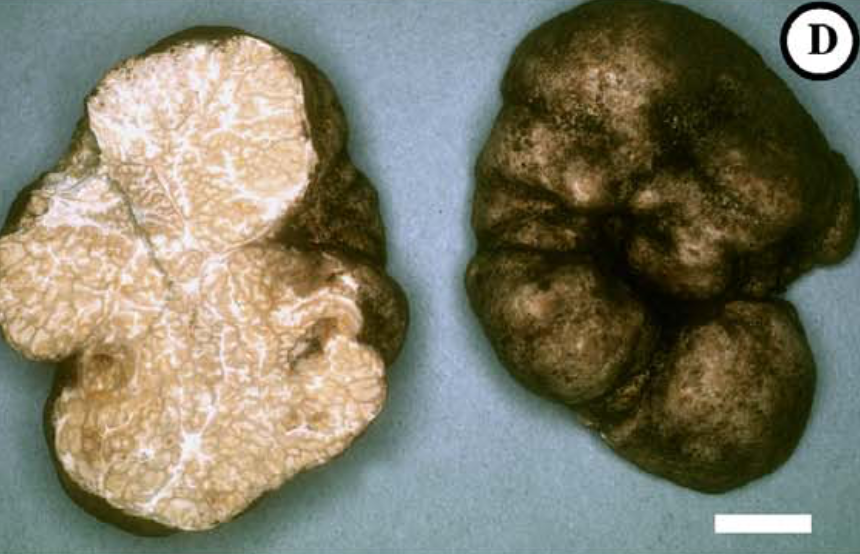Choiromyces
Nome científico: Choiromyces
Choiromyces
Nome científico: Choiromyces
 Photo By Stajich, Jason E.; Bonito, Gregory; Smith, Matthew E.; Nowak, Michael; Healy, Rosanne A.; Guevara, Gonzalo; Cázares, Efren; Kinoshita, Akihiko; Nouhra, Eduardo R.; Domínguez, Laura S.; Tedersoo, Leho; Murat, Claude; Wang, Yun; Moreno, Baldomero Arroyo; Pfister, Donald H.; Nara, Kazuhide; Zambonelli, Alessandra; Trappe, James M.; Vilgalys, Rytas. , used under CC-BY-2.5 /Cropped and compressed from original
Photo By Stajich, Jason E.; Bonito, Gregory; Smith, Matthew E.; Nowak, Michael; Healy, Rosanne A.; Guevara, Gonzalo; Cázares, Efren; Kinoshita, Akihiko; Nouhra, Eduardo R.; Domínguez, Laura S.; Tedersoo, Leho; Murat, Claude; Wang, Yun; Moreno, Baldomero Arroyo; Pfister, Donald H.; Nara, Kazuhide; Zambonelli, Alessandra; Trappe, James M.; Vilgalys, Rytas. , used under CC-BY-2.5 /Cropped and compressed from original Descrição
Choiromyces são fungos subterrâneos que formam grandes corpos frutíferos semelhantes a batatas. Eles crescem em simbiose com as raízes das árvores, particularmente carvalhos e faias. A superfície externa é de cor clara e verrucosa, enquanto o interior é marmorizado com padrões intrincados. Algumas espécies de choiromyces são altamente valorizadas por suas qualidades aromáticas.
Espécies de Choiromyces

 Photo By Stajich, Jason E.; Bonito, Gregory; Smith, Matthew E.; Nowak, Michael; Healy, Rosanne A.; Guevara, Gonzalo; Cázares, Efren; Kinoshita, Akihiko; Nouhra, Eduardo R.; Domínguez, Laura S.; Tedersoo, Leho; Murat, Claude; Wang, Yun; Moreno, Baldomero Arroyo; Pfister, Donald H.; Nara, Kazuhide; Zambonelli, Alessandra; Trappe, James M.; Vilgalys, Rytas. , used under CC-BY-2.5 /Cropped and compressed from original
Photo By Stajich, Jason E.; Bonito, Gregory; Smith, Matthew E.; Nowak, Michael; Healy, Rosanne A.; Guevara, Gonzalo; Cázares, Efren; Kinoshita, Akihiko; Nouhra, Eduardo R.; Domínguez, Laura S.; Tedersoo, Leho; Murat, Claude; Wang, Yun; Moreno, Baldomero Arroyo; Pfister, Donald H.; Nara, Kazuhide; Zambonelli, Alessandra; Trappe, James M.; Vilgalys, Rytas. , used under CC-BY-2.5 /Cropped and compressed from original